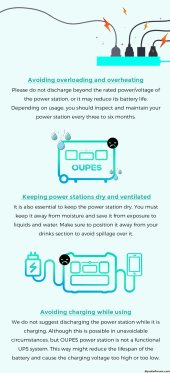A friend of mine purchased two Oupes Solar Generators, one 2400 and one 1200.
They emailed them stating:
Have they done a terrible job of designing their product, that charging while discharging could cause a battery over-voltage situation?!? Can anyone explain why they say this? Why would a manufacturer state this, or design a solar generator that would damage the system if you had input power to the system, as well as a load attached? Would the input power not get redirected to the load first, then charge the battery if the input power was greater than the load? Or if the load was greater than the input power, take 100% of the input power plus some of the battery toward the load?
This seems highly suspicious.
I have attached the image from the email.
They emailed them stating:
Now this flies in the face of everything I know about electricity.Avoid Charging While Using
We do not suggest discharging the power station while it is charging. Although this is possible in unavoidable circumstances, but OUPES power station is not a functional UPS system. This way might reduce the lifespan of the battery and cause the charging voltage too high or too low.
Have they done a terrible job of designing their product, that charging while discharging could cause a battery over-voltage situation?!? Can anyone explain why they say this? Why would a manufacturer state this, or design a solar generator that would damage the system if you had input power to the system, as well as a load attached? Would the input power not get redirected to the load first, then charge the battery if the input power was greater than the load? Or if the load was greater than the input power, take 100% of the input power plus some of the battery toward the load?
This seems highly suspicious.
I have attached the image from the email.



